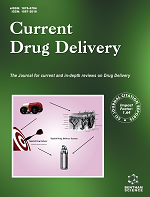
Full text loading...
We use cookies to track usage and preferences.I Understand

Metastatic melanoma poses a significant threat globally, with a distressingly low ten-year survival rate of only 10%. While FDA-approved treatments such as dacarbazine and high-dose IL-2 have been employed in clinical settings, their limitations underscore the urgent need for more effective therapies.
This study aimed to develop a potential anticancer local treatment through the extraction of various amounts of ginger extract loaded unto Poly(vinyl alcohol) (PVA) nanofibers.
The anticancer activity of the produced membranes was studied on human skin melanoma B16F10 cells. Other in vitro experiments such as cell migration assay, cell proliferation assay, cell viability assay, scanning electron microscopy assay, real-time PCR assay, and ant-inflammatory assay were performed for the in vitro characterization of the delivery system. Tissue toxicity of the developed patches was studied in a rat model.
The study showed that scaffolds loaded with 2%, 4%, 6%, 8%, and 0% of ginger extract had around 784.98 ± 202.31 nm, 771.86 ± 219.07 nm, 820.65 ± 242.43 nm, 785.19 ± 203.99 nm, and 671.29 ± 184.09 nm of mean fiber size, respectively. The ginger extract-loaded membranes suppressed the growth and migration activity of human skin melanoma B16F10 cells in a dose and time-dependent manner. Real-time PCR assay showed that the developed membranes modulated the expression levels of Ras/ERK and PI3K/AKT signaling pathways. Animal study results showed that our developed patches were not toxic against liver or skin tissues.
Ginger extract-loaded PVA nanofibers exhibited promising anticancer potential against melanoma cells, suggesting a viable localized treatment option.

Article metrics loading...

Full text loading...
References


Data & Media loading...